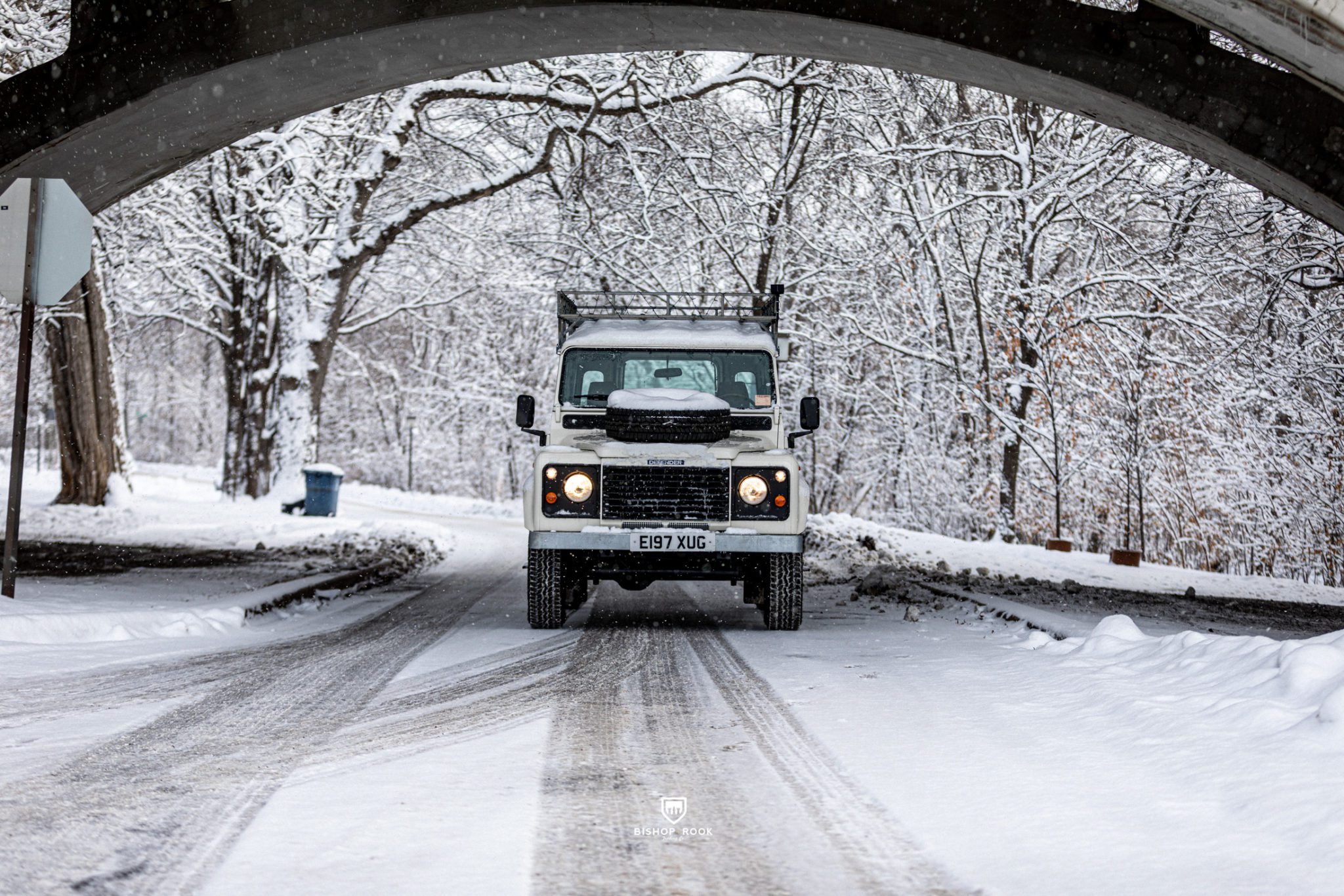Checker plate on a Defender tends to be a fairly polarizing subject and a topic we get asked a lot about. While this guide might not a definitive answer to everyone’s concerns, we’ve attempted to gather our thoughts (and opinions) here on the subject – mixed with a bit of urban legend and myth.
If you’ve looked at more than one Defender you’ve inevitably seen some form of checker plate adorning the front wings, lower sill, rear tub, or even the bottoms of the door. While many people get the creepy feeling that the checker plate is there to hide something, that’s not always the case.
What is Defender Checker Plate
Checker plate is also referred to as diamond plate and tread plate here in the US. It is typically an aluminum or steel panel that has a stamped pattern to provide traction and protection to a metal surface. For years, this has been used in industrial factories to protect walls and equipment, but at some point it jumped to the category of becoming a “vehicle mod.” Traditionally, the raised diamond pattern acts as a tread to reduce the risk of slips and absorb the impact of things being tossed about in the back of a vehicle. So why did it become a decoration for Defenders?
We would love to find the history of Land Rover Defender checker plate (we’re sure someone out there knows the answer – please drop us a line). For the sake of this discussion we will just assume it was the Tomb Raider Edition Defender that made this a popular trend. It probably happened before that, but this put the look on the big screen and lead to it’s explosion across the surfaces of our vehicles.

The Limited Edition ‘Tomb Raider’ is one of the best-equipped Defenders ever and a real collector’s car. From Silvertone Auctions.

What Purpose Does Defender Checker Plate Serve
There are essentially three reasons why someone would want checker plate on their Defender:
- Cosmetic looks
- Protect the surface from damage
- Hide surface blemishes and corrosion
I think we can all agree that checker plate in moderation can give your vehicle a very tough and rugged look. It provides a nice surface contrast and breaks up the normal lines. It gives a little “Mad Max” look to any otherwise civilized-looking Defender. Unless you put it on there yourself, or peaked beneath the rivets, you’ll always have the question in the back of your mind: “what’s hiding under there?”
In terms of protecting a surface from damage, we can speak from personal experience that the second you pull up to a group of people, someone is going to want to take a photo sitting on top of your Defender wing. I can’t tell you the number of times I’ve cringed when people have jumped up on top of a fender without checker plate and just saw the aluminum begin to buckle and bend under the pressure. We’ve also seen quite a few Defender hoods that have dents and ripples suspiciously in the same shape as a size 6 woman’s shoe.

Improvised photo shoot on Sarge.
In the case case of my friend Nicole above, Sarge made for a great improvised surface to showcase in front of here newly finished rehab project. Fortunately, Sarge had plenty of adventure marks from his life in the Lake District, so there was little worry about additional dents and dings. But in this case the checker plate served a wonderful purpose.
The last category of “hiding something” is usually pretty easy to spot. There are the typical areas where you find checker plate on a Defender, and then there are the ares where the plating has maybe migrated a little bit further than it should have.
If you see checker plate in the following areas, it’s definitely hiding bad stuff:
- Door bottoms (not the sill below, but the actual door bottom) – This is hiding bubbling paint and surface corrosion from two dissimilar metals touching each other (aluminum skin and steel door frame).
- Door tops – We’ve seen checker plate all the way up a door before. Behind it was probably a horse hoof sized dent that the previous owners couldn’t have been bothered to fix properly.
- Rear Cross Members – We promise you that checker plate over the rear cross member (rear bumper to Americans) is hiding some nasty business. It might just be cosmetic, but it’s probably something much worse.
- Foot Wells and Bulkhead – This stuff is tough and durable and provides for a nice slip-free surface. Unfortunately, it can also be used to hide a rotted out bulkhead. These areas are fairly easy to repair with a little sheet metal and welding wire, so it’s typical of a cheap repair if something has been paneled-over.
Would We Put on Checker Plate on a New Land Rover Defender Restoration?
Absolutely. It serves a purpose and doesn’t look terrible. If we know someone is going to use the Defender for camping, off-roading, or if we know they’re going to be tossing items around near the car, the plating can save the anxiety of seeing the first dent in the freshly repaired wing – and the guilt associated with the guilty person. The lower sill is a great place for some contrasting plating – even a smooth surface – as it’s an area that shoes and boots constantly bang about. In addition we may add a rear corner protection plate on the rear to help stiffen the rear tub and protect against wayward rocks and logs on the trail.
What about the rest of you? What do you think of checker plate on a Land Rover Defender?



















You must be logged in to post a comment.